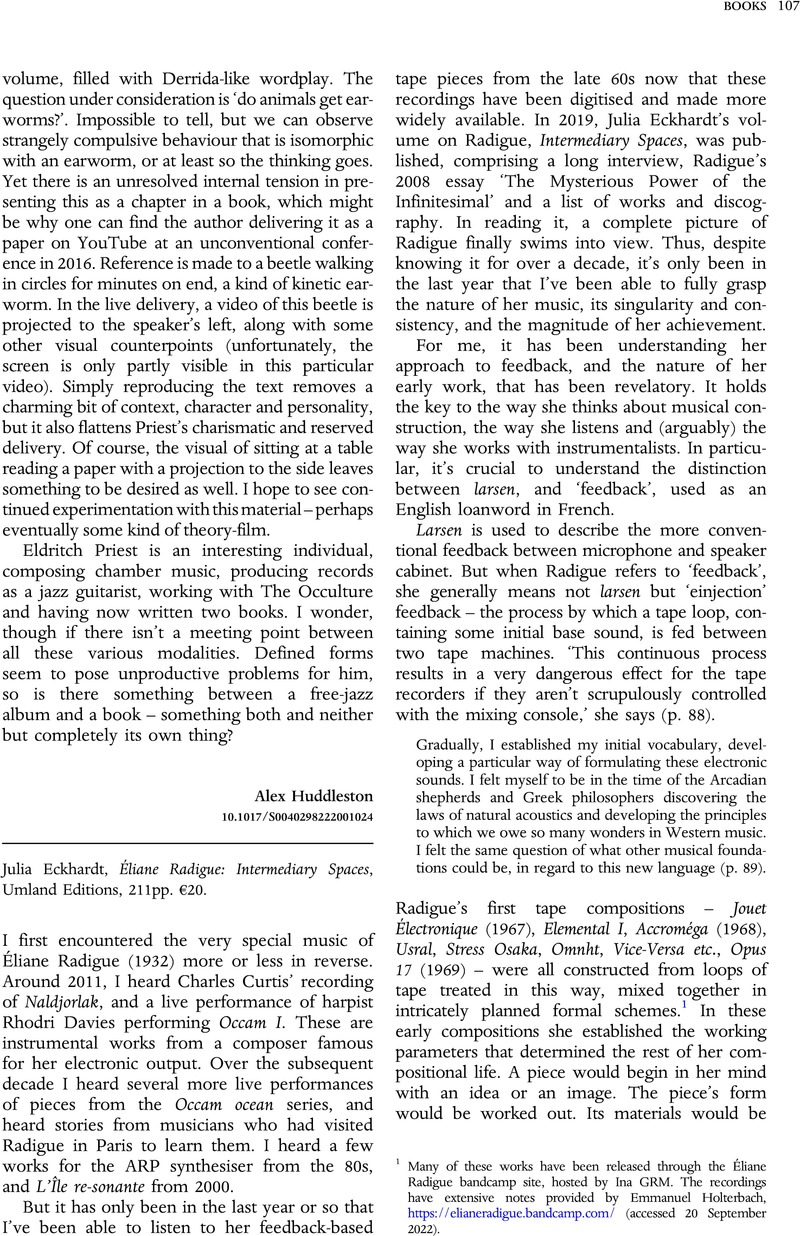No CrossRef data available.
Published online by Cambridge University Press: 11 January 2023

1 Many of these works have been released through the Éliane Radigue bandcamp site, hosted by Ina GRM. The recordings have extensive notes provided by Emmanuel Holterbach, https://elianeradigue.bandcamp.com/ (accessed 20 September 2022).